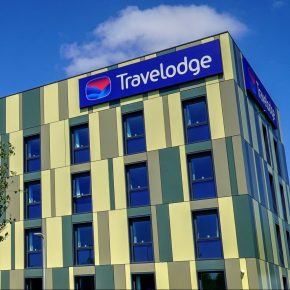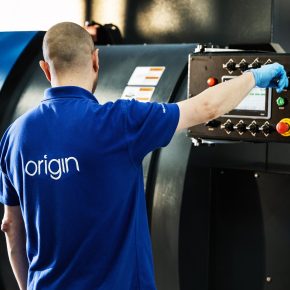
GUEST ARTICLE: Shining a light on the sheds
This guest article sees Simon Cox, head of sustainability at Prologis in the UK, take an in-depth look at modern warehouses, including how can be utilised and what the future holds for them.
What does the modern warehouse or distribution centre look like?
“Today, modern warehouses are key to ensuring the success of their occupiers: helping businesses reduce operational costs, demonstrate a commitment to sustainability and attract and retain employees.
To help occupiers achieve these things, the modern warehouse needs three key components.
Firstly, the building needs to be energy efficient. Lighting, for example, accounts for 90 percent of energy use in a logistics building and, with many occupiers operating 24 hours a day, LED lighting and remote energy monitoring systems can help to reduce costs and provide occupiers with valuable data about where energy is being used.
Solar panels linked to battery storage units can also offset high energy costs during peak charging periods.
The second thing a building needs to provide is the flexibility to accommodate changing occupier needs. With the rise in automation and the use of electric vehicles, for example, today’s buildings must be designed with future needs in mind.
Lastly (and perhaps most importantly, given a global shortage of labour), logistics buildings need to help occupiers attract and retain staff. Today, logistics companies are competing with other sectors such as retail and office for a diminishing pool of labour.
Therefore, attracting and retaining employees is at the top of everyone’s agenda and the warehouse has an important role to play. Green spaces, an employee gym and on-site café are just some examples of features you might find in and around the modern warehouse.”
Have you noticed any trends influencing demand for warehouse space?
“Thanks to the continued rise of online retail and the consolidation of supply chains, the role of the warehouse has moved from ancillary function to a core and central part of the business operation; it should be equally as good as a company’s flagship store in terms of build quality, efficiency and employee welfare.
End-user and customer demand for a sustainability at all points of the supply chain means the sustainability credentials of the warehouse, in which goods are stored and packed are also increasing in importance.
As well as certificates of environmental performance, occupiers expect their property partner to be able to provide them with robust metrics to evidence that the building is low-carbon, both operationally and in terms of its structure and fabric.”
What about cost – how significant is that when choosing a warehouse facility?
“It’s important to remember that the cost of the renting and servicing the building is only a small part of an occupier’s operational costs (around 5 percent); however, it’s an area where cost reductions are welcomed and where the design and construction of the building can deliver real benefits.
Sustainable buildings, for example, are efficient by their very nature and the use of clever design and equipment (such as remote energy monitoring systems) can also help further reduce costs for the occupier.”
How important is natural light in modern warehouse design?
“Warehouses in the UK are typically ambient spaces without heating or cooling systems and natural light has an important role to play in creating a pleasant working environment for employees and reducing energy costs.
When you consider that natural light can reduce overall energy consumption by 70-80 percent and increase employee wellbeing, it’s clear that this is a critical element of the modern warehouse.
Research directly links increased employee wellbeing with access to natural light. Therefore, the provision of 15 percent rooflights and green outdoor spaces where employees can spend their break periods are key to creating a building which benefits employee welfare.”
What does the future hold for modern warehouse design?
“As more and more people purchase goods online, warehouses will need to adapt to an increased need for automated processes, energy efficiency and a requirement to build facilities closer to where people live and work.
Multi-level buildings, increased facilities for electric vehicles and a greater requirement for energy to power automated systems will all influence future building design, and warehouse systems will need to grow and adapt to accommodate future uses.”
Latest news

21st November 2024
Altro distils style and performance at English Spirit
English Spirit Distillery has used an extensive package of Altro products front and back of house, in their new visitor centre café, shop and viewing area for the working distillery.
Posted in Articles, Bathrooms, Bedrooms & Washrooms, Building Industry News, Building Products & Structures, Building Systems, Case Studies, Floors, Interior Design & Construction, Interiors, Kitchens, Restoration & Refurbishment, Retrofit & Renovation, Timber Buildings and Timber Products, Walls
21st November 2024
Abloy UK creates bespoke locking solution for Secure Information Boxes
Abloy UK has supplied The Safety Letterbox Company Ltd with a bespoke Sentry CL811 Camlock for use in its Secure Information Boxes, assisting life safety and complying with new regulations and legislation for high rise buildings.
Posted in Access Control & Door Entry Systems, Architectural Ironmongery, Articles, Building Industry News, Building Products & Structures, Building Regulations & Accreditations, Building Services, Case Studies, Facility Management & Building Services, Health & Safety, Posts, Restoration & Refurbishment, Retrofit & Renovation, Security and Fire Protection
20th November 2024
CUPA: CUPACLAD enhances hotel aesthetics with a creative natural slate façade
Situated at the northern edge of a newly developed retail park near Bristol, the Abbey Wood Travelodge was conceived as part of the company’s new Budget-Luxe line of hotels – it features CUPACLAD, from CUPA PIZARRAS.
Posted in Articles, Building Industry News, Building Products & Structures, Building Systems, Case Studies, Cladding, Concrete, Cement, Admixtures, Facades, Posts, Restoration & Refurbishment, Retrofit & Renovation, Walls
20th November 2024
Origin launches in-house powder coating facility
Origin’s latest investment is set to redefine industry standards as it launches its own in-house powder coating facility.
Posted in Aluminium Products, Articles, Building Industry News, Building Products & Structures, Building Systems, Doors, Glass, Glazing, Innovations & New Products, Paints, Coatings & Finishes, Restoration & Refurbishment, Retrofit & Renovation, Site Preparation, Windows
 Sign up:
Sign up: